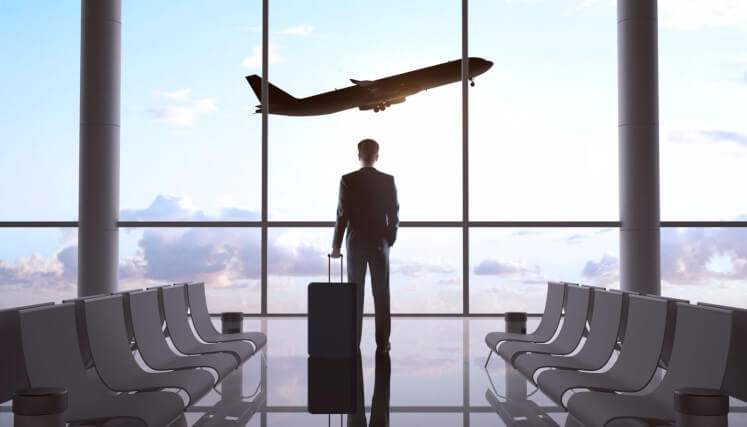
Leisure travel continues to lead travel recovery in the United States.
NB: This is an article from Amadeus
As business travel slowly begins to pick up, it prompts thoughts like, “When will business travel return, what will it look like, and how can I attract these travelers to my hotel or destination now?”
Subscribe to our weekly newsletter and stay up to date
Who is the “New” Business Traveler?
Before you can attract any guest (business, leisure, “bleisure”, or any other type), you first must know who they are and what they care about. The answer to “Who is the ‘new’ business traveler?” is complex. According to new Amadeus research, a whopping 96% of travel management companies surveyed say the top priority for business travelers are health and safety information before and during a trip.
What else does the new business traveler care about? tClara’s white paper, “How We Meet Matters” revealed that the top reasons C-suite executives most often prioritized business trips were “earning customer trust,” “win revenue,” and “build culture, teamwork, and relationships.” In that same report, 70% of all business leaders say that a balanced mix of working virtually and in-person would allow them to do their best work. The hybrid working model is certainly an interesting dynamic for hoteliers to take advantage of.
In addition to understanding needs and objectives, personas are a helpful tool to generalize challenges, expectations, and priorities for an audience. They allow you to best position your messaging, packages, and pricing to not only attract a specific type of guest but get them to book. Here are some newer personas to consider for the return of business travel:
- The Solo Business Traveler: This traveler is resuming business meetings to earn customer trust and win revenue. They care more about Wi-Fi and technology enhancements than ever before.
- The Digital Nomad: Has the freedom to pursue their dream of traveling around the world without having to sacrifice their professional career. 15.5 million American workers currently describe themselves as digital nomads, increasing 42% from 2020 and 112% from 2019.
- The Workcationer: Combines work and vacation at a destination to explore after work is done and on the weekends. In a recent Simon Kucher & Partners study, nearly 80% of respondents around the globe suggested they’d add a couple of weeks of ‘workcation’ to their holiday.
- Small Group Event / Work Retreat: 81% of meetings in 2022 are expected to have a face-to-face component and the top 3 meeting types projected to show the most growth are internal team meetings and trainings, small and simple meetings, and client or customer advisory boards.
- Travel Agents: Not to be forgotten, as a cohort they make exponentially higher yield bookings compared to the individual traveler.
4 Steps to Attract the “New” Business Traveler
Hoteliers and DMOs must be creative with messaging, explore untapped distribution channels, and create a safe and comfortable experience for guests and eventgoers in order to attract the “new” business traveler. While these travelers and their events may look and feel different, hospitality still has the opportunity to bring people together safely and create memorable experiences. Are you ready to welcome back all flavors of business travel? Here are 4 steps to take to prepare:
1. Craft Personas
We’ve already covered the first step to attracting the “new” business traveler – identifying who your business traveler is and what they care about by creating personas for the primary individuals and group types you’re trying to attract to your property or location. Use these loose generalizations to help guide the rest of your strategic decision making.
2. Understand Your Key Demand Indicators
Access to forward-looking data has never been more important. Understanding your most successful segments, channels, RevPAR rank, which businesses are booking into your market, changes in booking lead times, and demand for varying lengths of stays can all have significant impact on your distribution and marketing strategies.
3. Connect Through Effective Marketing
It’s vital to create messaging that speaks to guests in a way that inspires. Create content that responds to motivations and concerns of the personas that you’ve identified for your property or area and reach them on the right channels at the right times.
4. Redefine Your Distribution Channel Mix
As GDS business grows, it’s critical to continuously evaluate where your demand and bookings are coming from and align your pricing and offer strategies accordingly. And, with the return of business travel, now is the time for hoteliers to consider negotiated rate business for 2023.
Data Shows Business Travel is Really Returning
Amadeus’ Demand360® data shows US hotel occupancy rates outperforming 2019 (pre-pandemic) levels since early March, reaching a high of 74% occupancy for the week of June 12, 2022. The percentage of on-the-books group business is also positive – steadily increasing from 7% to 14% just this year.
Shifting to GDS business, Amadeus Agency360+® data shows GDS bookings for May reaching 74% of the same period in 2019. The majority of room nights booked were still non-negotiated, but corporate bookings in the GDS grew to 42% in May. Meanwhile, average daily rate (ADR) for GDS bookings is also gaining, from a high of $178 in April 2020 to $186 the week of May 15, 2022, with higher rates extending into July.






